Over 2 GW of pumped hydro storage could be coming to Navajo Nation lands, as the Federal Energy Regulatory Commission has accepted developer Daybreak Power’s application for a preliminary permit for its proposed 2,200 megawatt Navajo Energy Storage Station.
The acceptance has been described as an “important early milestone,” but it doesn’t mean that development can begin full steam ahead yet, the permit hasn’t even been issued. Once it has been issued, there is still planning and permitting to be done.
The estimated $3.6 billion project would sit on Navajo Nation lands near the south shore of Lake Powell. The location is interesting because the project would technically be located in San Juan County, Utah, but the nearest city would be Page, Arizona.
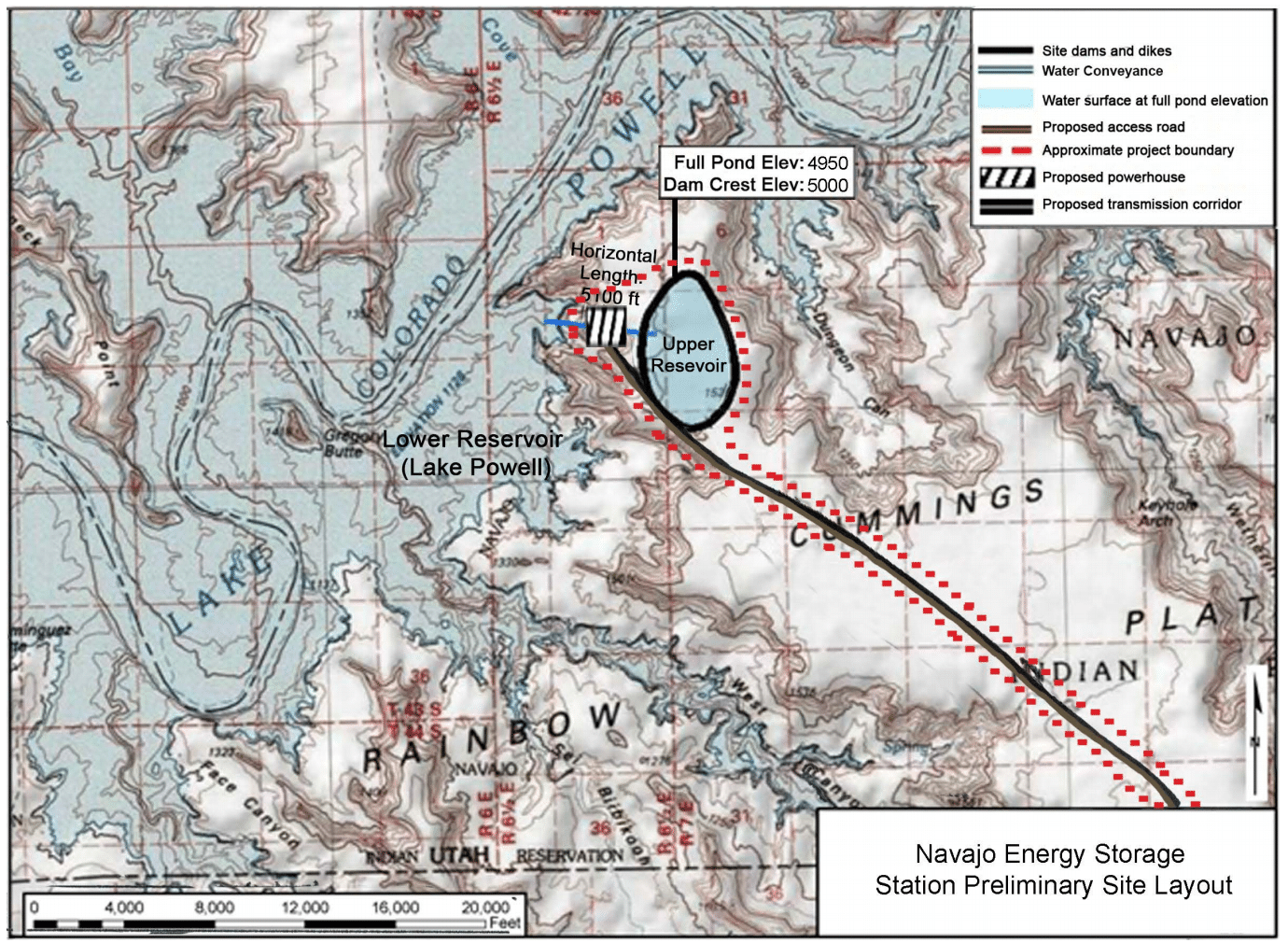
Another important point of note is that the project plans outline the use of transmission infrastructure formerly used by the now-retired Navajo Generating Station coal facility.
If built, the project would clock in at 2,230 MW, which could provide 10 hours of continuous generation, with an average annual generation of 3,365 GWh, however, as the company shared with pv magazine:
“These are ballpark figures based on the proposed installed capacity and estimates for how often we’d be generating. We expect the figures to change as we refine the project and conduct engineering/feasibility studies.”
Unlike some pumped hydro plants, which use some of the energy generated while the water is released to re-charge the pump for the next use, Navajo will use solar and wind energy to pump water to the upper reservoir.
The issue of where this energy will go and who will be buying it is an entirely different matter.
The project’s $3.6 billion price tag is another issue, one not necessarily focused on if it will get financed, but rather how. Likely, developers will look to support financing by selling the generation via a power purchase contract, though there is also the possibility that grid operators might see value in the project as a transmission asset and choose to invest in it.
When asked about financing options for the project, a representative for Daybreak told pv magazine, “We will be seeking PPAs to underpin financing in a traditional way, with an expectation that California’s move toward a state-wide procurement process for long-duration storage could offer a big boost. Alternatively, there are dockets underway in California and elsewhere to improve mechanisms for providing revenue requirements for storage as a transmission asset. We will be exploring both of these avenues and see what emerges…Large-scale energy projects on tribal lands may be eligible for DOE loan guarantees, we also will be exploring that possibility, which could ease the financing burden considerably.”
We will know soon, as the application specifies that plans for financing the project will be developed throughout the term of the preliminary permit. Soon is a relative term in this case, as the preliminary permit term is three years.
Not much is known about the developer, Daybreak Power, as the company was founded inn 2018 and its only other planned project is the Next Generation Pumped Storage facility, a 1,540-megawatt energy storage facility proposed to be located about five miles from Hoover Dam.
While not always discussed with the same vigor as lithium-ion battery storage, pumped-hydro storage is a technology growing in appeal as renewable energy penetration grows. It’s also becoming more and more financially viable, as outlined in Pumped Energy Storage: Vital to California’s Renewable Energy Future, a report by UC San Diego professor David Victor and five co-authors.
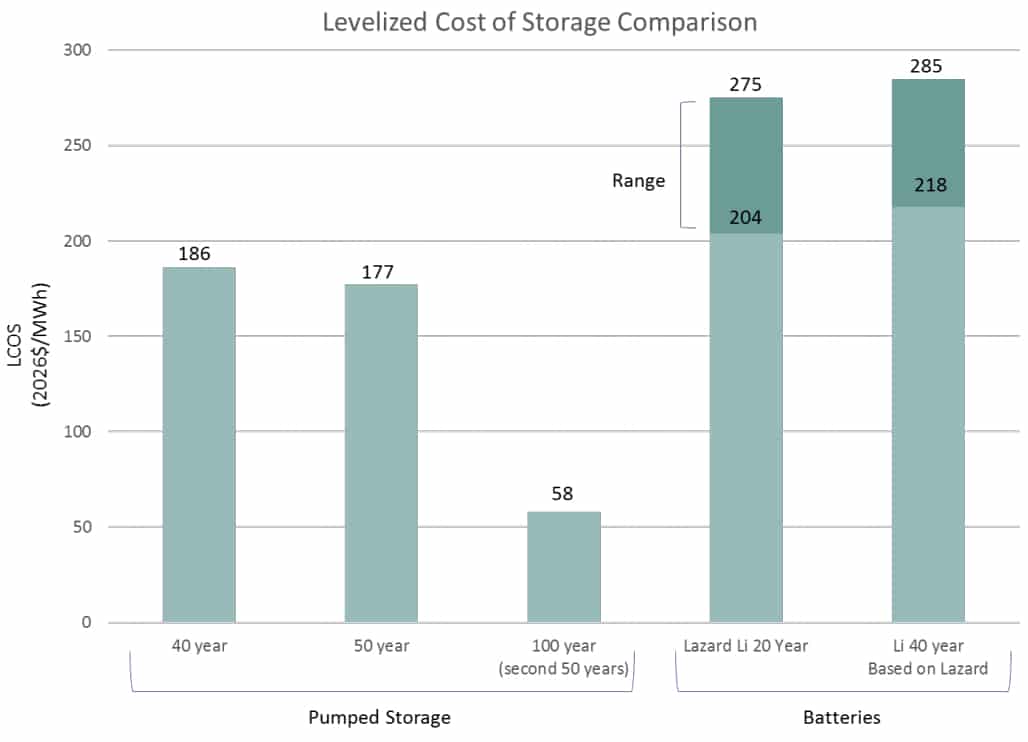
The report is covered in full by pv magazine USA’s Will Driscoll here, but in short, the report found that the higher capital costs of pumped storage versus battery storage are outweighed by the longer lifetime of pumped storage, which leads to an overall lower levelized cost.
This content is protected by copyright and may not be reused. If you want to cooperate with us and would like to reuse some of our content, please contact: editors@pv-magazine.com.
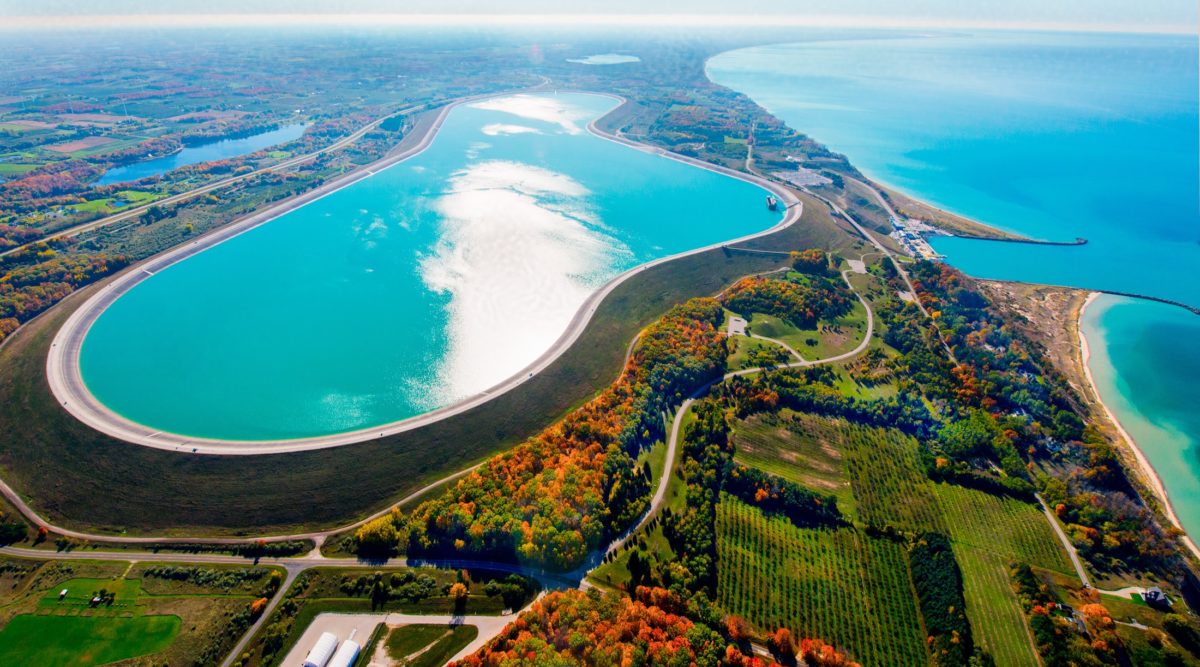
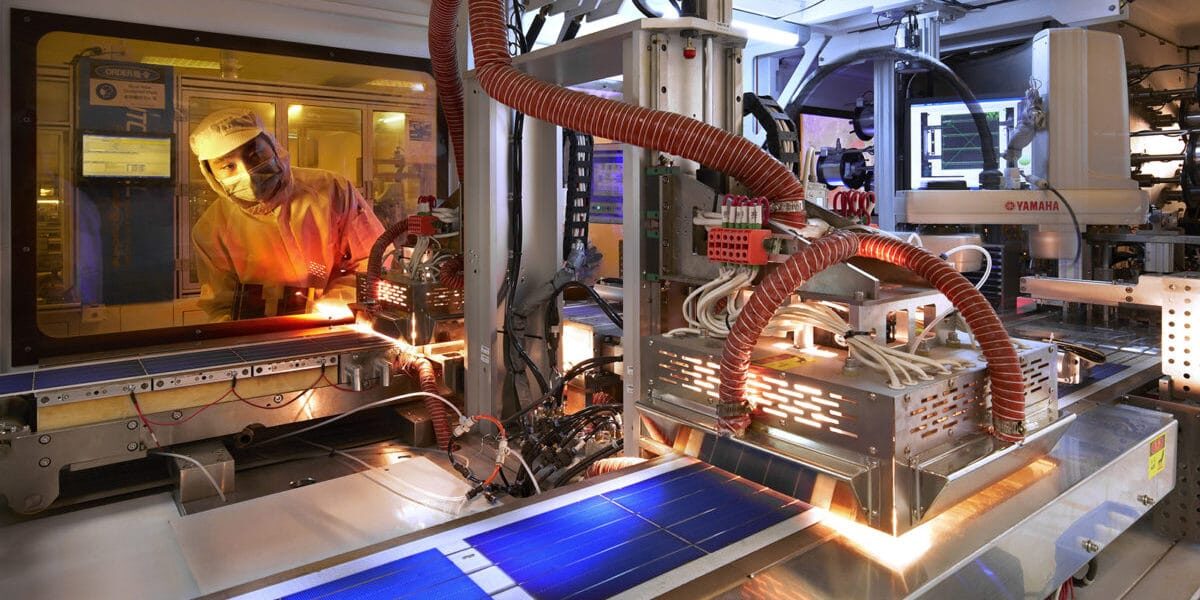






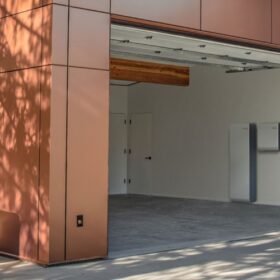
Should use hydrogen for storing energy instead of pumped hydro storing
Maybe CSP concentrated solar power technology can fill the upper reservoir more cheaply than PV due to higher efficiency? By using steam to move water uphill to be condensed there??
“The report is covered in full by pv magazine USA’s Will Driscoll here, but in short, the report found that the higher capital costs of pumped storage versus battery storage are outweighed by the longer lifetime of pumped storage, which leads to an overall lower levelized cost.”
Yes hydro pumped storage is a large scale and proven technology. Now for every Engineering project, there are pros and cons. In this particular instance the River flow is important, even a “little” excursion of water from the river to the holding pond could be a violation of water treaties going back almost a century. It could also be a violation of recent agreements for the “run of river” levels needed to meet water demands down stream. The system will be costly for this system and will in the end use mechanical generation of falling water to generate power to put on the grid.
The problem? ‘WE’ are not using new technology like chemical battery, redox flow batteries, molten metal storage batteries of GW scale to bring down the costs of energy storage. Yes one can use the river as a source and destination of the water to generate electricity. But one could use the same or (less) acreage and construct an energy storage system using say, redox technology that could well be a 2GW, 4GW…10GW storage facility that could be containerized, installed in power blocks, and portable enough to be installed (anywhere) there is available land, Kansas would be happy to see such monolithic energy storage systems in their relatively flat State. One could construct a redox energy storage system of around 100GW on about 250 acres with careful engineering. Large scale solar PV farms and wind farms take up much more space than this. If using one of the more power dense lithium ion technologies, then one could install several GW of energy storage on 50 acres or less.
The native Americans own lots of water and their rights are senior. Besides, this is still considered err red “pass through” use as the water is returned to the source.